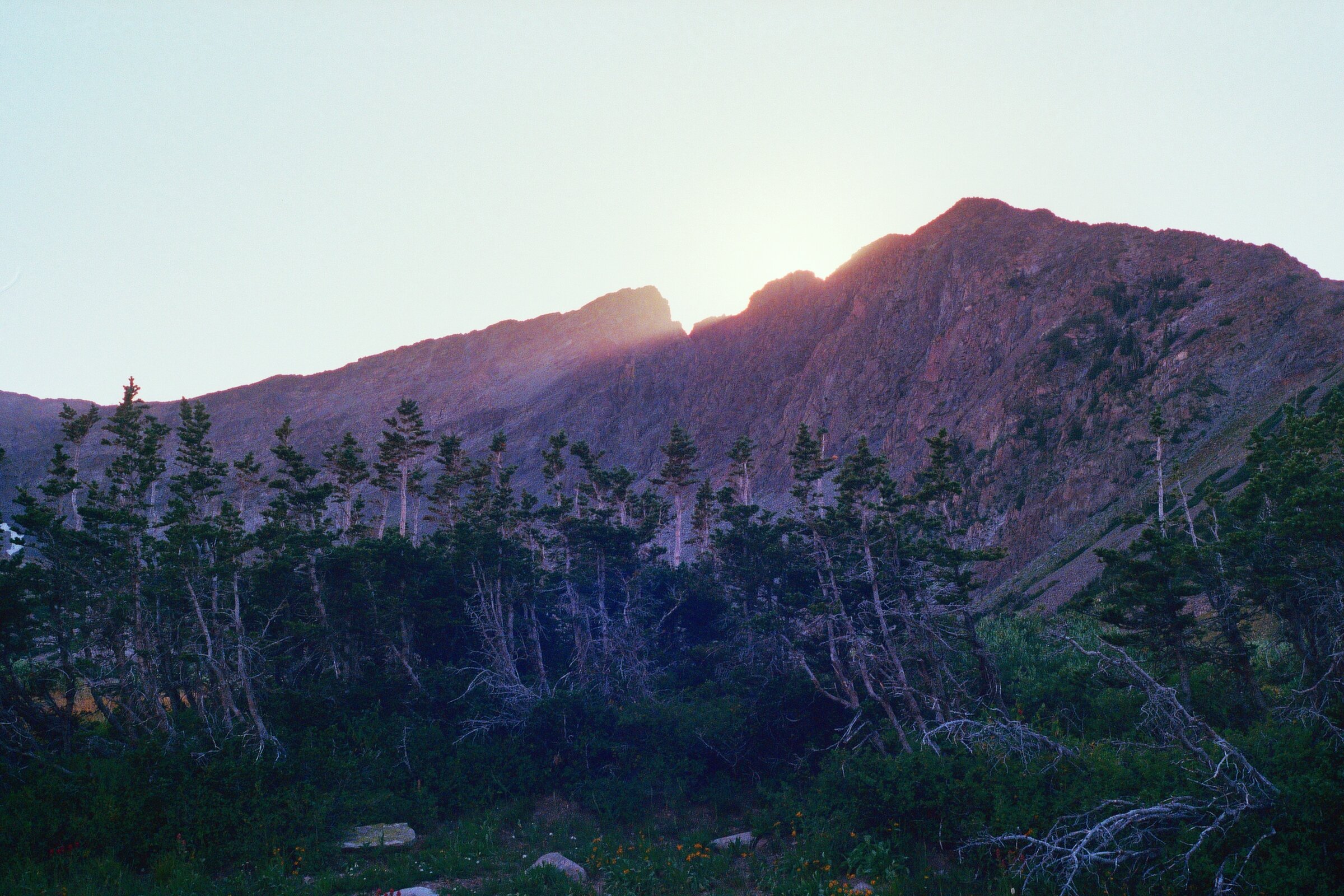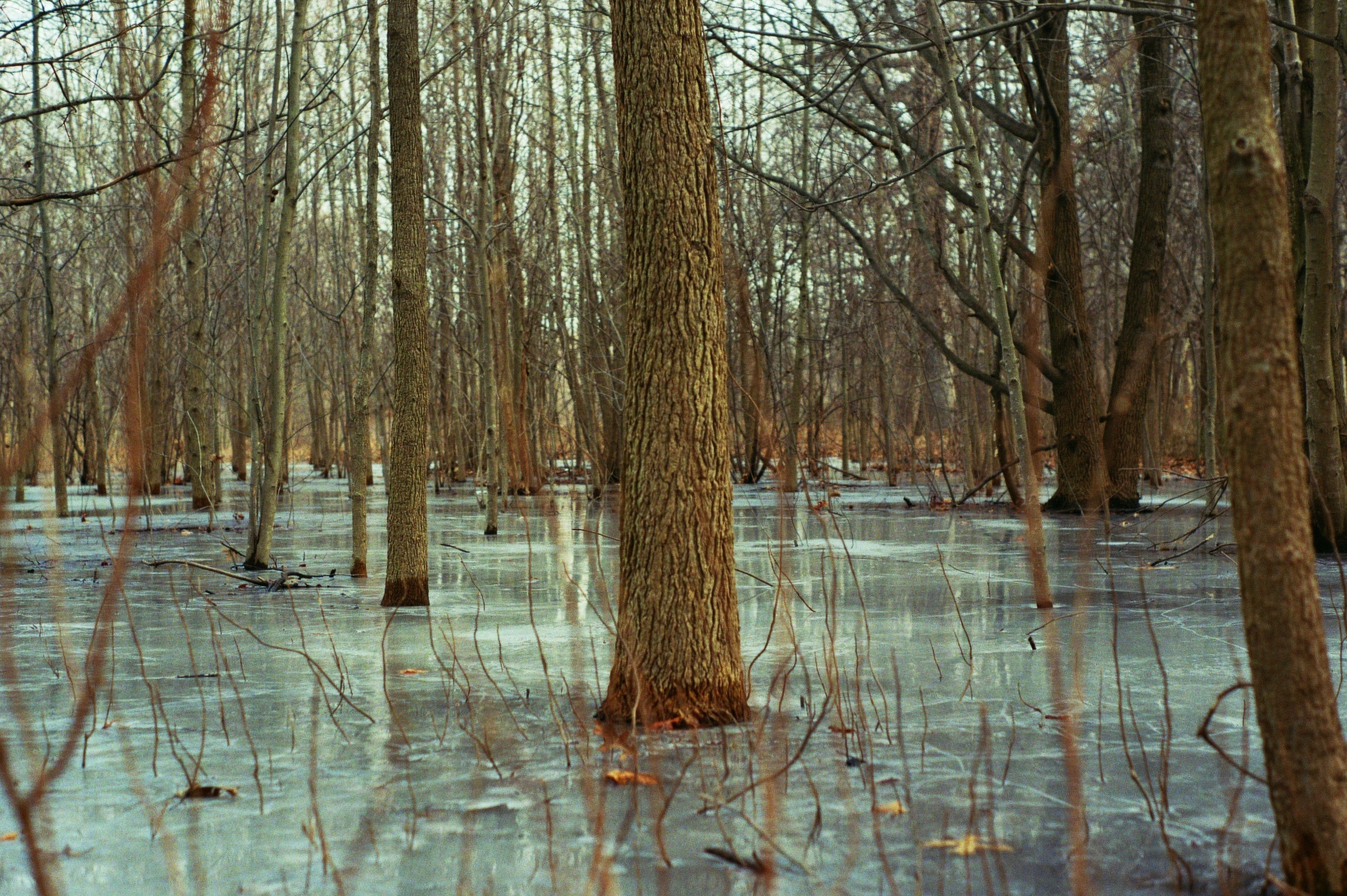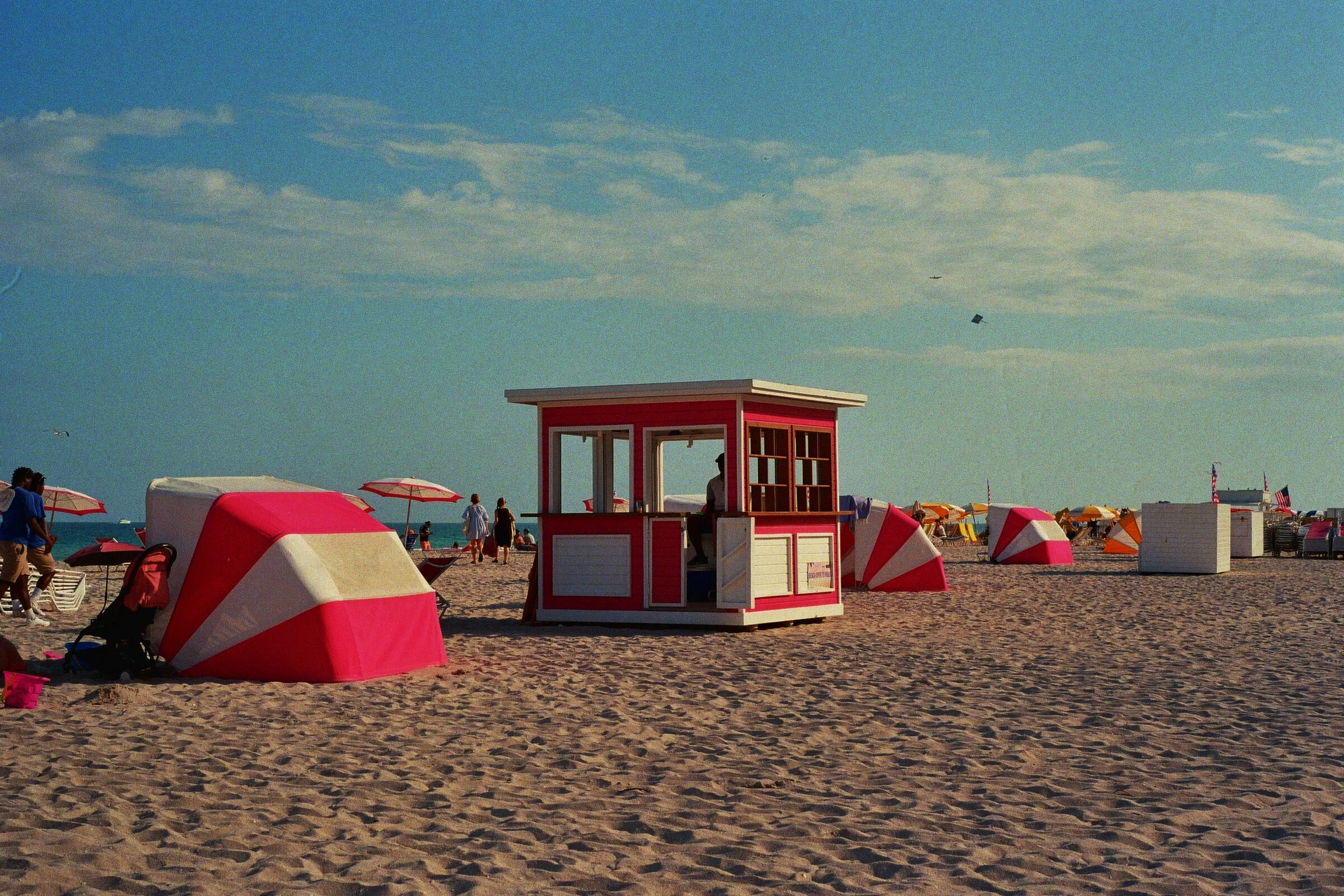COLORADO

Art is an inherently indescribable word. Whether asked by a first grader or a centenarian to define it, I’d say that it’s “what we put out into the world after taking it in”. Regardless of medium, art is our best shot at relaying our experience to others, however imperfectly. The imperfections are what make a work of art special, providing a peripheral glimpse into the creator’s perspective on that which they perceived.
There is a painting I’ve always loved that sums this sense of mine up neatly. The painting is simply titled Rocky Mountain Landscape painted by Albert Bierstadt in 1870.
Rocky Mountain Landscape (1870), Albert Bierstadt
Bierstadt was a prominent member of the second generation of the Hudson River School, a loose collective of mid-19th century landscape artists influenced heavily by Romanticism. Evolving out of the Hudson River School was Luminism, a style focused on the effect of light as it blankets the land (and as it happens, my favorite style of painting). Bierstadt joined several of the major American land expeditions westward into the newly acquired Louisiana Purchase and beyond as the ideology of Manifest Destiny took off (not a view we’d agree with today but nevertheless a defining moment in American history), bringing with him his paintbrush, easel and Luminist tendencies.
Now’s the part of the article where you rightly ask, “ but where the hell’s he going with this...”?
Well, Bierstadt’s paintings of the American West, created at a time when photography was still largely a rarity and luxury (the oldest surviving photograph, View from the Window at Le Gras, was likely taken in 1826-27 and it took decades and decades thereafter for the technology to become widespread) were for many of that time the only window into the unknown frontier beyond.
His paintings are dramatic, exaggerative, refulgent. They depict the Rockies as near-infinite peaks with only the steepest of cliffs and I swear he always threw an extra waterfall in there for dramatic effect. A surveyor at the USGS would be fundamentally disappointed by his objective failure to perceive scale with any smidge of accuracy.
But me,
I find them to be masterpieces.
They capture not the dimensions of the peaks and valleys but the impact that trudging them firsthand has on the Soul. The Rockies are unique, raw, and brutalist. They aren’t like most ranges globally, which, with several exceptions (such as the Himalayas), tend to be closer to the coasts near tectonic plate boundaries (think the Andes, the Sierra Nevada, Cascades). The Rockies arise out of nothing...pioneers traveled for months across barren, flat plains only to be awoken by the sanctity of the topography in its many 14,000 ft peaks rising above the sea of grass. Even today, if one drives across America on Interstate 70 there’s still a sense of having arrived at the Promised Land when they slowly appear on the horizon. Streams unfold out of chasmous canyons and pine, spruce, fir and aspen blanket the hills with strokes of green and yellow. It’s, well, a painting.
Conveying that sense of scale and beauty is difficult. You’ll see that in my photos to follow, what are in fact gargantuan mountains appear to be mere hills. Still, the cacophony of colors and starkness of the landscape shines through, and while I’m no Bierstadt, I’ll give you my best shot of articulating both what Colorado is like and why you should go.
A brief preface here: I lived in the Centennial State for a decade. After high school I packed up from California and unlike Bierstadt I headed East, not West (it’s hard to head West when there’s only 700 feet of “west” left to explore before getting wet but there are worse predicaments to be had in life). For me the appeal was different than it may be for others drawn there. After all, California has plenty of mountains, even taller (by just a bit) than the tallest of the Rockies at that. And they too are extraordinarily beautiful. Yet no matter how beautiful they may be, they’re what I already knew. The pull of the unknown drove me to head out to an entirely unknown state at eighteen; by the time I left I was twenty-eight (with a few gaps between). Needless to say, the place shaped me tremendously. The force that formed me more than any other? The most transformative of all on Earth: geology.
The Rockies, Colorado. Fletcher Berryman 2020. Pentax K1000. Kodak Gold 400.
The Rockies, Colorado. Fletcher Berryman 2020. Pentax K1000. Kodak Gold 400.
My dad hauling water back to camp. The Rockies, Colorado. Fletcher Berryman 2020. Pentax K1000. Kodak Gold 400.
Lulu Mountain. The Rockies, Colorado. Fletcher Berryman 2020. Pentax K1000. Kodak Gold 400.
The Rockies, Colorado. Fletcher Berryman 2020. Pentax K1000. Kodak Gold 400.
The Rockies, Colorado. Fletcher Berryman 2020. Pentax K1000. Kodak Gold 400.
The Rockies, Colorado. Fletcher Berryman 2020. Pentax K1000. Kodak Gold 400.
The Rockies, Colorado. Fletcher Berryman 2020. Pentax K1000. Kodak Gold 400.
The Rockies, Colorado. Fletcher Berryman 2020. Pentax K1000. Kodak Gold 400.
I believe that the Divine prefers to speak to us in landscapes rather than words. Simply put, there’s something within each of us that lies dormant, a spark of divinity that ignites at the sight of something as grand as the Collegiate Peaks or the San Juans.
I returned back to Colorado after having moved to NYC for a multi-day backpacking trip with my dad, my brothers-in-law and their dads. In wanting to get away we strategized well ahead of time given that we’d be hiking on Memorial Day and thus vying for space with Colorado’s many other outdoorsy folk.
As our token cartographer and bonafide map-nerd the task fell largely on me (I can’t say I’m good for much else in an expedition, honestly). I felt avoiding anything along Interstate 70, the state’s main freeway and the central artery through Denver, was essential. That narrowed things down considerably, and led me to consider the ranges surrounding North Park, a remote high altitude basin in the far north of the state. It’s sparse, very sparse...only the fourth most populous county in Colorado with 1,394 people and all of it stunning (by comparison, more than 40 times that number live in just my neighborhood of NYC). After some examination of routes and USGS quadrangles, I went with a trail leading to the American Lakes. The area lies just outside the Northern boundary of Rocky Mountain National Park.
The hike itself takes you along a beautiful mountain stream laced with wildflowers winding through the pines in a narrow valley. Eventually we rose above the stream and switchbacked up to higher elevation, with massive peaks slowly poking above the dense woods on either side.
As the ascent waned and our path became gradual we edged slowly from forest into alpine meadow. That feeling of the forest opening up is a unique one, and no amount of cliche-bashing will take away the perfection with which The Sound of Music so accurately depicts the wonder of emerging into that sort of landscape. We had arrived. Moose grazed in an open field, ptarmigans walked around with little fear and trout filled the shallow alpine lakes. Everything felt fresh, unadulterated and spacious. To re-engage with such quietude after flying in from New York City was akin to performing an iPhone full reset on my mind. Everything goes blank for a second and then ding, that iconic Mac noise chimes as the Apple logo appears to reassure you that your restart has been successfully executed.
The Rockies, Colorado. Fletcher Berryman 2020. Pentax K1000. Kodak Gold 400.
The Rockies, Colorado. Fletcher Berryman 2020. Pentax K1000. Kodak Gold 400.
The Rockies, Colorado. Fletcher Berryman 2020. Pentax K1000. Kodak Gold 400.
The Rockies, Colorado. Fletcher Berryman 2020. Pentax K1000. Kodak Gold 400.
The Rockies, Colorado. Fletcher Berryman 2020. Pentax K1000. Kodak Gold 400.
The Rockies, Colorado. Fletcher Berryman 2020. Pentax K1000. Kodak Gold 400.
The Rockies, Colorado. Fletcher Berryman 2020. Pentax K1000. Kodak Gold 400.
The Rockies, Colorado. Fletcher Berryman 2020. Pentax K1000. Kodak Gold 400.
The Rockies, Colorado. Fletcher Berryman 2020. Pentax K1000. Kodak Gold 400.
The Rockies, Colorado. Fletcher Berryman 2020. Pentax K1000. Kodak Gold 400.
The Rockies, Colorado. Fletcher Berryman 2020. Pentax K1000. Kodak Gold 400.
The Rockies, Colorado. Fletcher Berryman 2020. Pentax K1000. Kodak Gold 400.
The Rockies, Colorado. Fletcher Berryman 2020. Pentax K1000. Kodak Gold 400.
The Rockies, Colorado. Fletcher Berryman 2020. Pentax K1000. Kodak Gold 400.
The Rockies, Colorado. Fletcher Berryman 2020. Pentax K1000. Kodak Gold 400.
The Rockies, Colorado. Fletcher Berryman 2020. Pentax K1000. Kodak Gold 400.
The Rockies, Colorado. Fletcher Berryman 2020. Pentax K1000. Kodak Gold 400.
The Rockies, Colorado. Fletcher Berryman 2020. Pentax K1000. Kodak Gold 400.
Sometimes the beauty of ordinary places can be extracted with the right eye and care, as is the case on a random backstreet of Queens or an abandoned building in the Mojave Desert. Other times we’re invited by Nature to experience the inverse: the beauty is overwhelming and raw, evading the capture of any man-made device.
These places, whether it be The Rocky Mountains or the Hawaiian Islands, the Catskills or the Badlands..they’re all best captured by artists. Yes countless photographers have shot masterpieces in all, but whether by paint or camera, it’s those who’ve managed to convey the feeling rather than the physicality of these sacred places who’ve ultimately succeeded.
Ansel Adams, John Muir, Georgia O’Keeffe, Edward Abbey, and Albert Bierstadt...they didn’t see elevations or contour lines, they saw environments and the feelings we exude when enveloped by them.
I am definitely not on that list. So enjoy these sub-par photos and hopefully feel transported to a place of serenity as we all practice isolation in these uncertain times of COVID-19.
Stay safe,
Fletcher

































